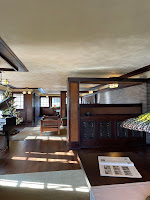“Centennial Olympic Park became the most visible iconic space of the games, a symbology that has continued to this day” (103).
The Book
The Olympic Games are more than two weeks of sport competition for the host city. They are an opportunity to imagine what the city could be, revitalize and create amenities, and welcome the world for the Games and in the future. In Atlanta’s Olympics Resurgence: How the 1996 Games Revived a Struggling City, Michael Dobbins, Leon S. Eplan, and Randal Roark explain this process for Atlanta and the 1996 Summer Olympics.
The process for becoming an Olympic host city is long and
involved. First, city and civic leaders must convince the US Olympic Committee
(USOC) that their city should be chosen as the US candidate for a particular
Olympic Games. In the case of Atlanta, this began in 1986 and, in 1988, the
USOC chose Atlanta. The next step is to persuade the International Olympic
Committee (IOC). In February 1990, “five thick volumes of materials” were
submitted to the IOC and, over the course of several months, Atlanta
representatives hosted and visited numerous members of the IOC (41). The hard
work paid off when the IOC voted 51-35 to choose Atlanta as the host of the
1996 Olympics, in September 1990.
Atlanta had six years to put in place plans to not only host a
successful Olympics, but also revitalize a city in decline; the dual goals of
Atlanta’s mayor. The Olympic Development Program focused on organizing the
Games, addressing the city’s social needs, boosting the economy, and updating
infrastructure. From here, authors Dobbin, Eplan, and Roark explore the
public-private relationships and city planning that needed to address the
mayor’s goals. A brief portion of the book is spent on the Olympics themselves,
providing interesting facts (for example, it was the first Olympics to use the
internet and have a website).
The authors conclude with a focus on the long-term impact and
legacy of the Olympics on Atlanta. Since then, city policy continues to explore
ways to revitalize the city, the improvements to public spaces and
neighborhoods still put pedestrians first, and Centennial Olympic Park provides
a variety of amenities for visitors and residents.
Atlanta’s Olympic Resurgence’s focus is on the before and after of the Olympics. Except for brief mentions, the actual weeks of competition are not included. The authors were all involved with the planning for the Olympics and have backgrounds in either city planning or architecture. This would be particularly interesting for people that are involved in city planning or project management; but it might get too detailed for others. The chapters are broken into short sections with clear headings, making it easy to read and follow. Black and white photos and charts are interspersed throughout the book. In some instances, it was not clear how the photo related to the narrative and the charts would have been better in color.
The Place



















